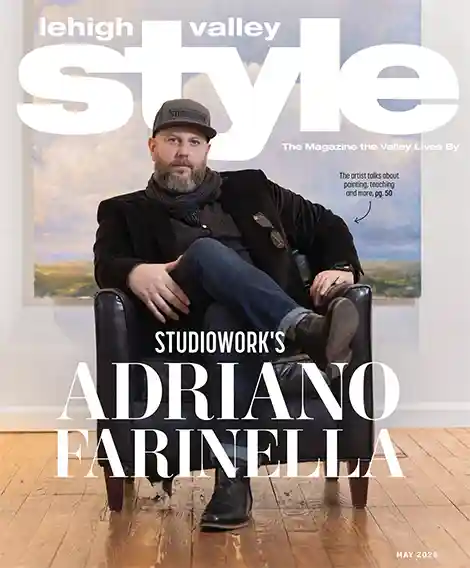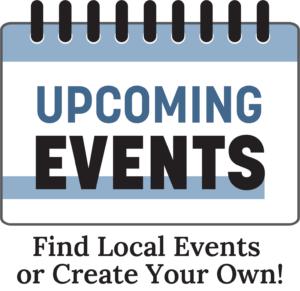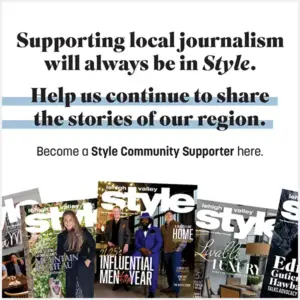Spend some time in a typical art gallery and you'll get a crash course on the rules: you can gaze, glance or gawk. If you need a better view, go ahead and stand close to the canvas, but not too close. Don't you dare lay a finger on that Lichtenstein. And keep your paws off the Picasso. Failure to heed these mandates usually will earn you a stern rebuke from a security guard, or maybe even a quick escort to the nearest exit. But the guidelines are a little different in the world of painter Michael Freeman. “You can touch the art,” he says. “I make it for all people to experience.”
Freeman is a relative newcomer to the local arts scene. He was raised in Scotch Plains, New Jersey, and moved to the Lehigh Valley in 2002 at the age of 29. He settled first in Whitehall and later moved to the Easton area. Freeman says getting acclimated to the region took some time: “I'm mostly a Jersey boy. This area was really different for me. I missed the hustle and bustle for a while.” Freeman says he first picked up a paintbrush in 2019, inspired by his wife, Jannillia Freeman, and his daughter, Asia Morton, both of whom Michael describes as creative types. Jannillia, he says, is a DIYer who makes her own candles and T-shirts, while Asia is an amateur photographer. “I felt left out,” he says. “I thought, ‘What could I do?'”
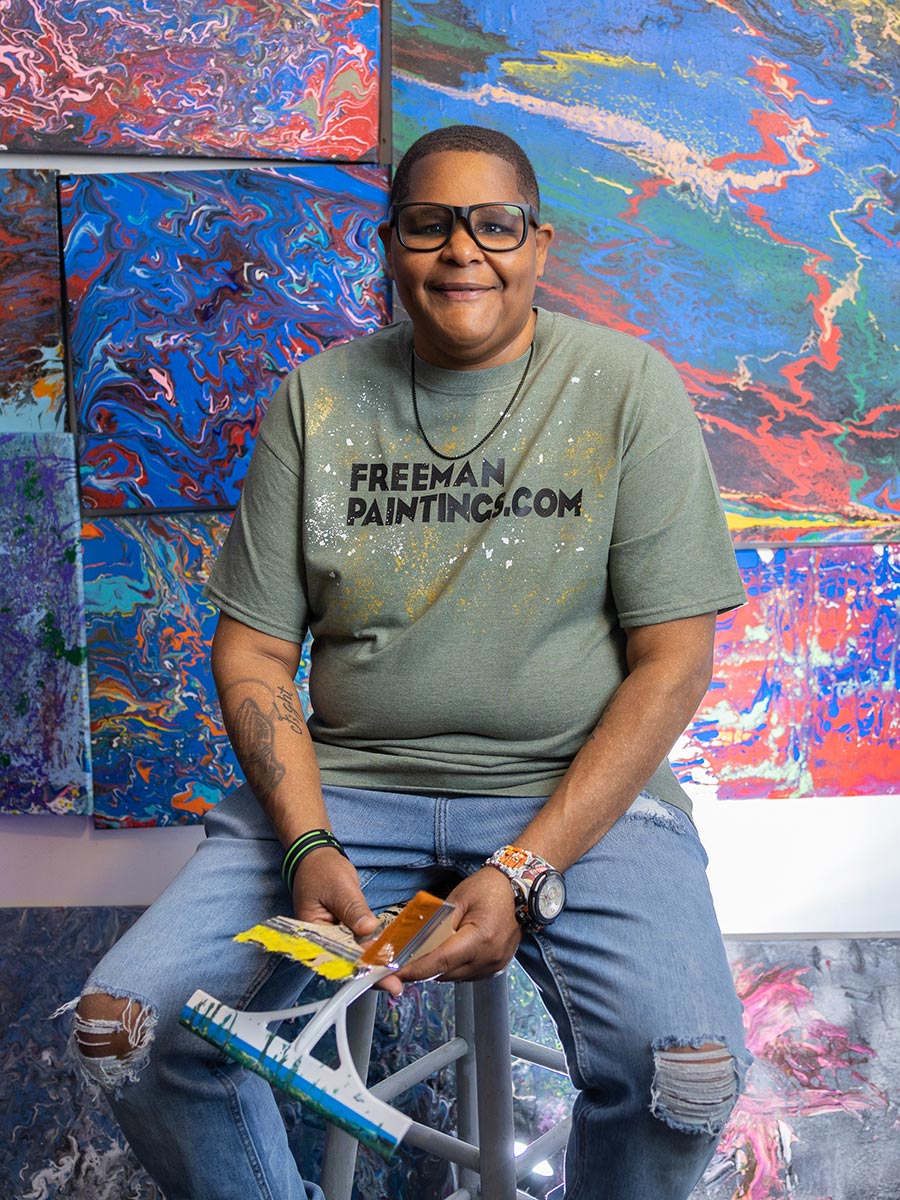
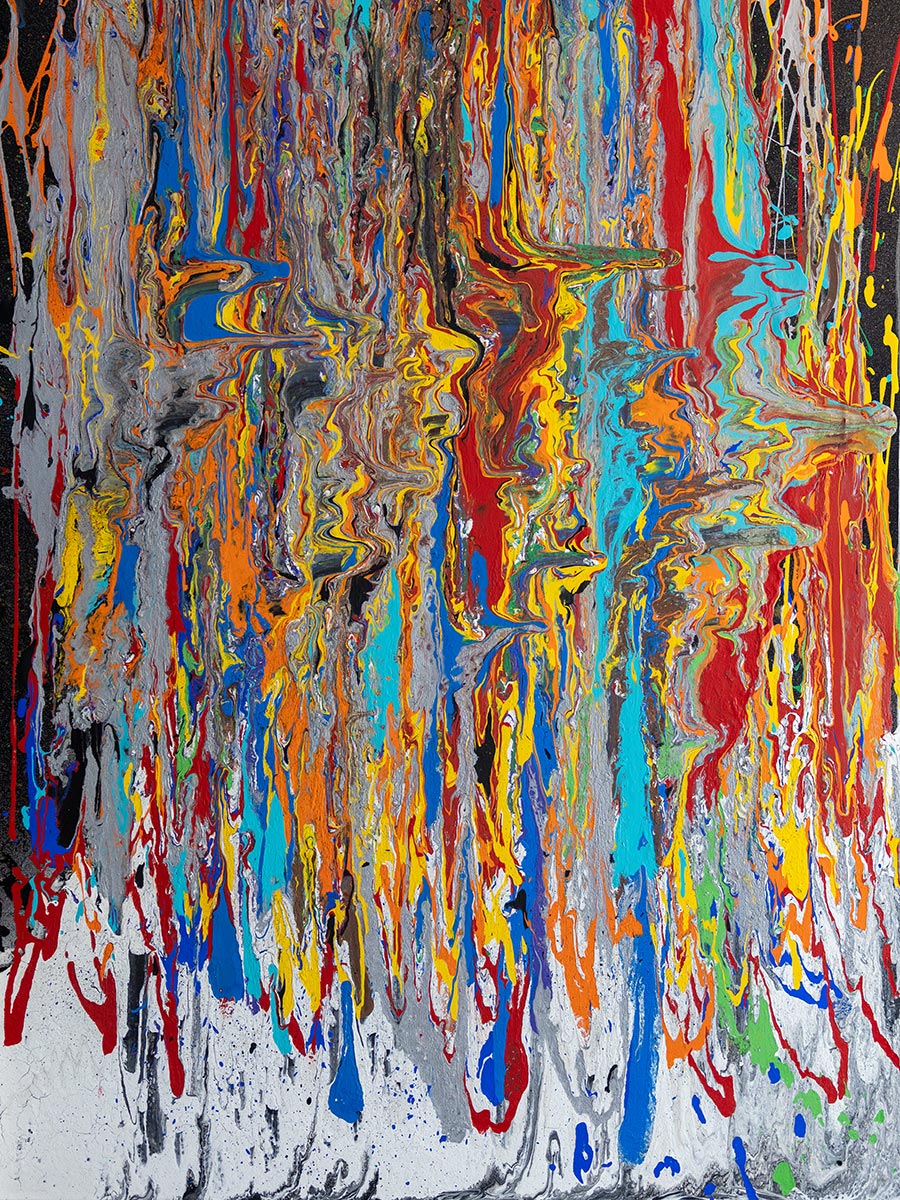
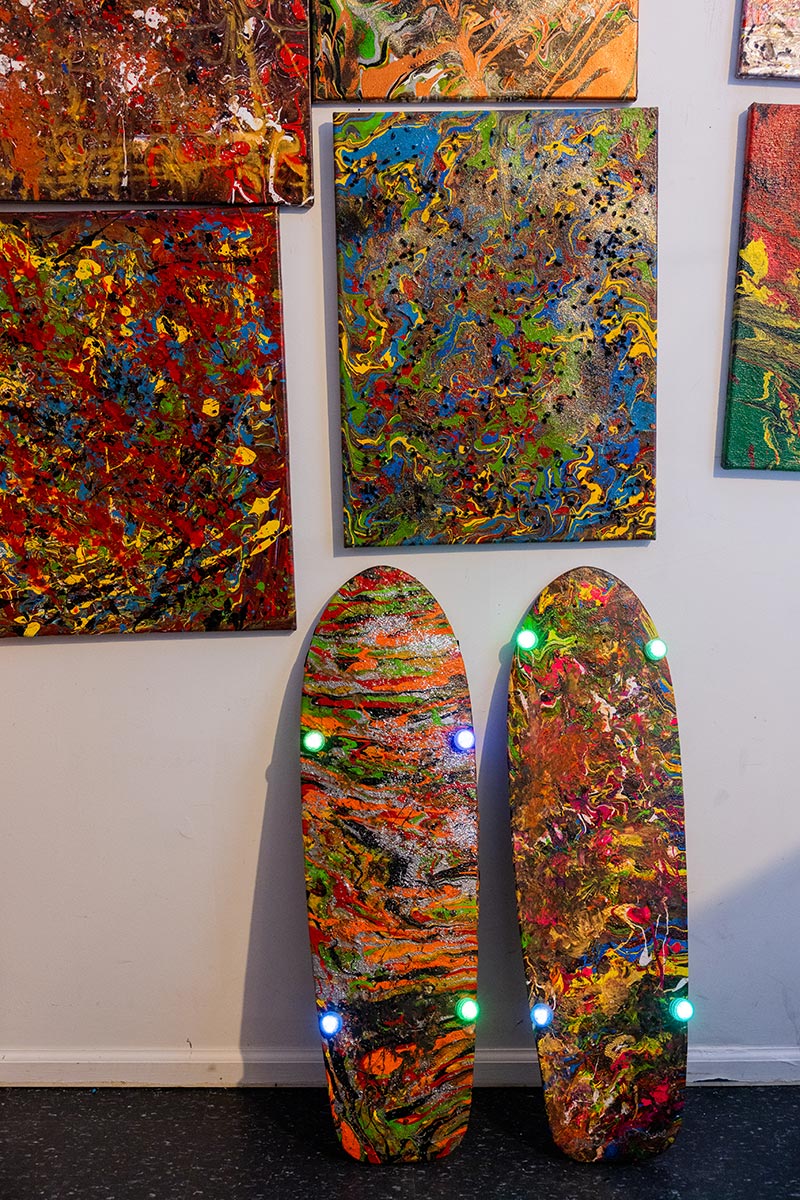
But Freeman, who is 49, had other reasons to seek out an artistic outlet. Freeman says he has long struggled with anxiety and depression brought on, in part, by a visual impairment that has impacted him since birth. Freeman is legally blind; he describes it as tunnel vision, meaning he has no peripheral vision. “I tell people, imagine being a horse with blinders. That's how my vision is,” he says. In addition, Freeman is partially color-blind. He says he's also been diagnosed as mentally challenged, and he's a survivor of physical and sexual abuse from his childhood. Freeman says, beyond conquering his own self-doubt, he's had to contend with more than a few naysayers over the years. “I was told in life, I can't do this, I'm not going to be able to do that.” His earlier struggles may not have been the things that defined him, but they certainly shaped the man he became, and the artist he's still becoming. He wanted to try his hand at painting because he was seeking a new way to push his visual abilities. “I felt like painting would do that,” he says. He recalls the first time he put paint on canvas: “I dug down and I said, ‘Let's see what happens.'”
It wasn't long before Freeman abandoned the traditional brush-on-canvas technique in favor of pour-painting, which is exactly what it sounds like: paint is poured or dripped onto the surface either directly from the bottle or can, or by way of some other kind of tool or wand. It's a style made famous by American artist Jackson Pollock, whom Freeman cites as one of his inspirations. And it's easy to see Pollock's influence in Freeman's style. Although Freeman favors canvas sizes that are smaller, his color choices are varied and vibrant. And texture, of course, is key. Freeman's paintings are meant to be a tactile experience. What does that mean for the viewer? In short, don't be shy.
“I love to see people's faces,” says Freeman. “I tell everybody, touch my art. Experience it. It opens up the mind differently.” He's aware that the please-touch-me approach wouldn't fly in most conventional art galleries, and he's OK with that. “I love opening up someone's eyes to art in a different way,” he says.
Freeman sometimes ventures into mixed-media territory with the addition of items like rope, copper and beads to his canvasses. The process of taking a painting from start to finish is typically not a lengthy one for him, he says. He can have a painting finished in a matter of hours rather than days or weeks. “It's all feel,” he says. “Moving the canvas. Letting it flow.” He typically uses acrylic paint, but he's also employed house paint and even glow-in-the-dark paint. His style is purely abstract, which he believes allows for greater exploration—both for himself, and for the viewer.
Last August, Freeman helmed his first solo show as an artist at the Hampton Inn in Lower Nazareth Township. “It was humbling but surreal,” he says. “I finally felt like I was comfortable and I wanted to show people what I was doing.” Since then, he's shown his work as part of other local exhibitions and events, including Touchstone Theatre's Festival UnBound, and Cocktails and Collecting at the Allentown Art Museum.
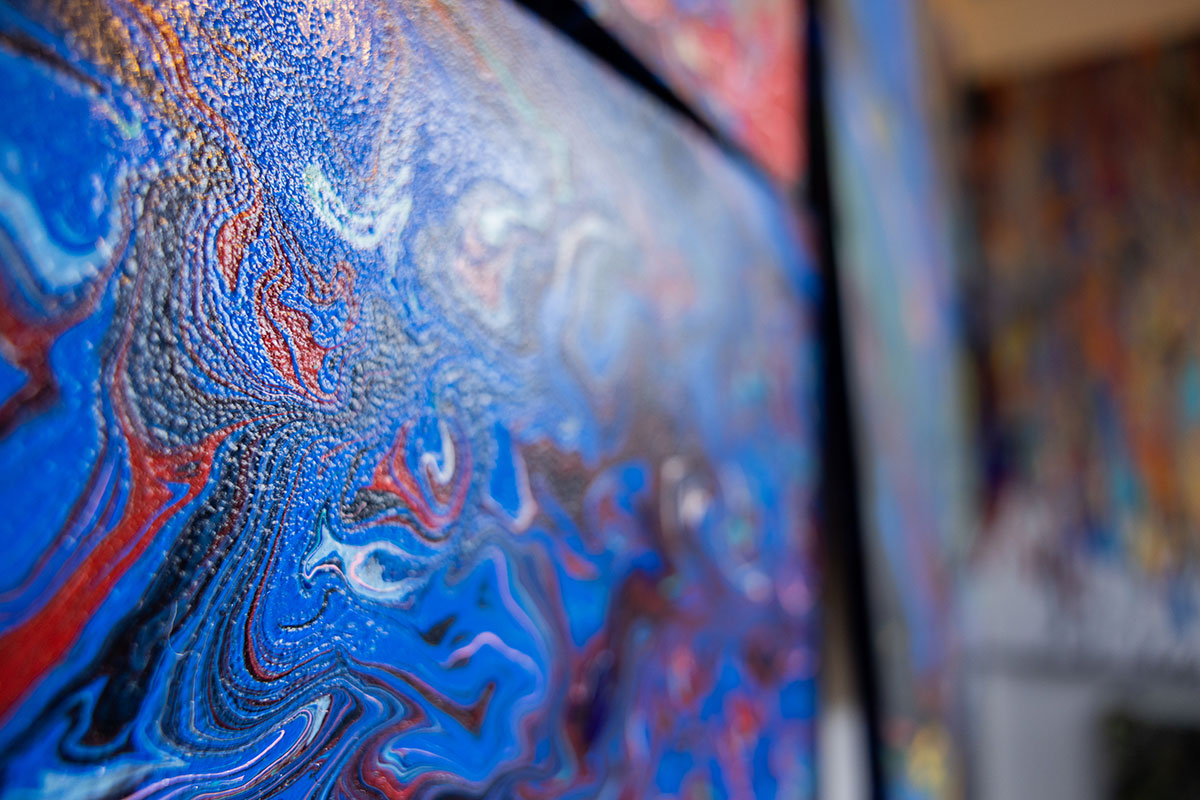
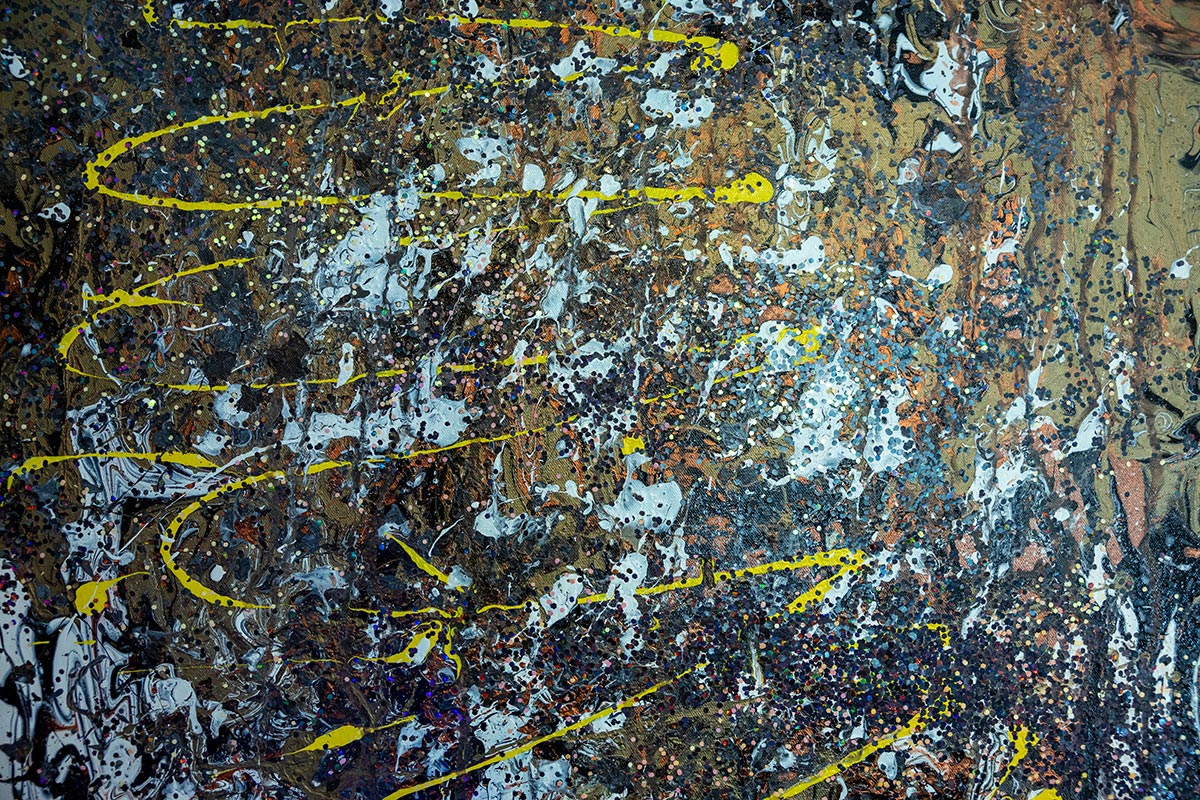
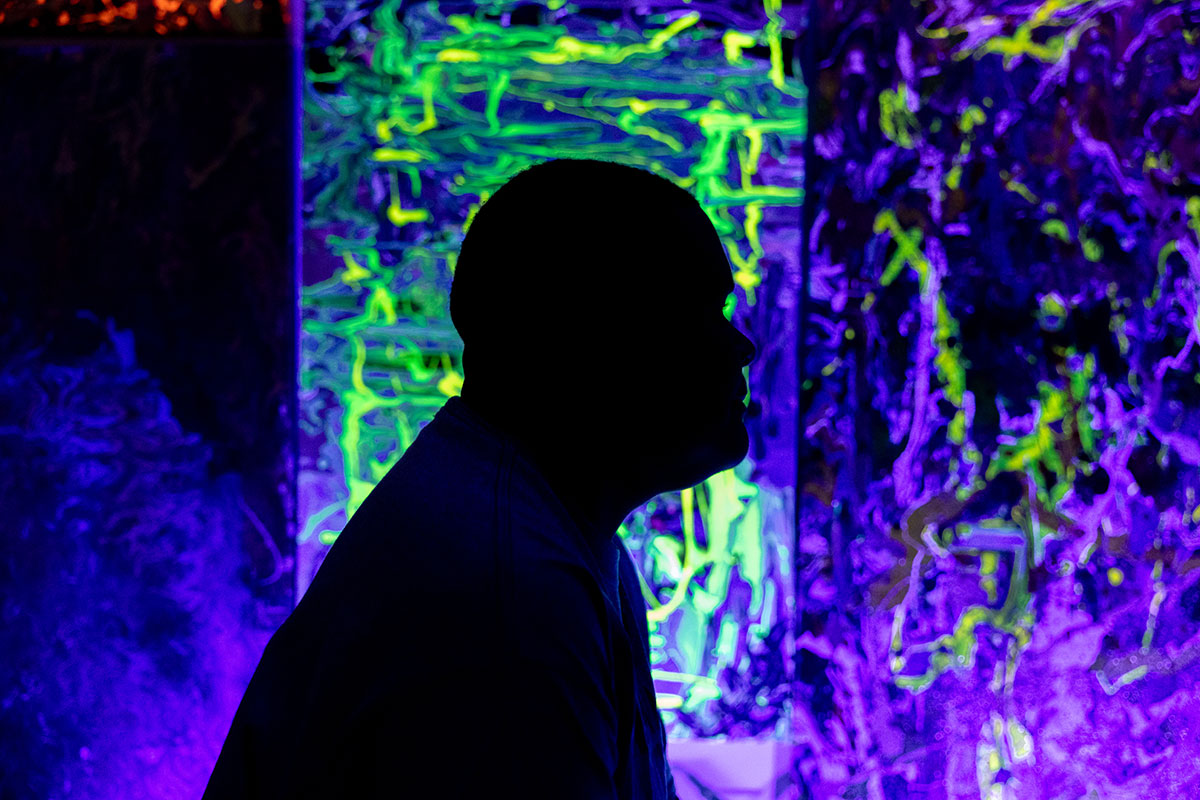
The collection he's currently working on is a very personal one, as the title—The Art of Me—suggests. “I want people to get a feel for me as a person and as an artist,” Freeman says. He's incorporating themes and colors that resonate with him and evoke his African American heritage and culture, although that sometimes can conjure up memories of a painful past. “We all have a path we travel. I want to bring that to light,” Freeman says. “I just like putting it all on the canvas.”
Freeman hopes to one day have a studio of his own. His current workspace is his garage, which he admits is less than ideal, especially during the cold winter months. He envisions a place in the area where he and fellow artists can work and sell their art, whatever it might be.
(“No judgement. They can just be free to do whatever they want.”) He's also very interested in collaborating with other creative minds. Another recent project was a commission from mega Jimi Hendrix fan and former Lehigh Valley resident John Paul Marosy, who asked Freeman to make him four paintings that recall the spirit of the late rock star. Those paintings are being applied to Marosy's car via vinyl wrap.
Freeman speaks with great passion about his art. But he's even more passionate about trying to lead by example. “It's important to let everyone know that people with a vision disability, or any disability, can hold down jobs, can do whatever they want to do. They just need more support, more encouragement,” he says. He urges those who are suffering in silence with anxiety and depression to ask for help and dare to push the boundaries of their comfort zone. “Don't be afraid,” he says. “Step out. You never know what's going to happen.” And above all, he emphasizes, never let anyone else define you. “You don't have to stay in what people say you are,” says Freeman.
Published as "Insight" in the February 2022 edition of Lehigh Valley Style magazine.







